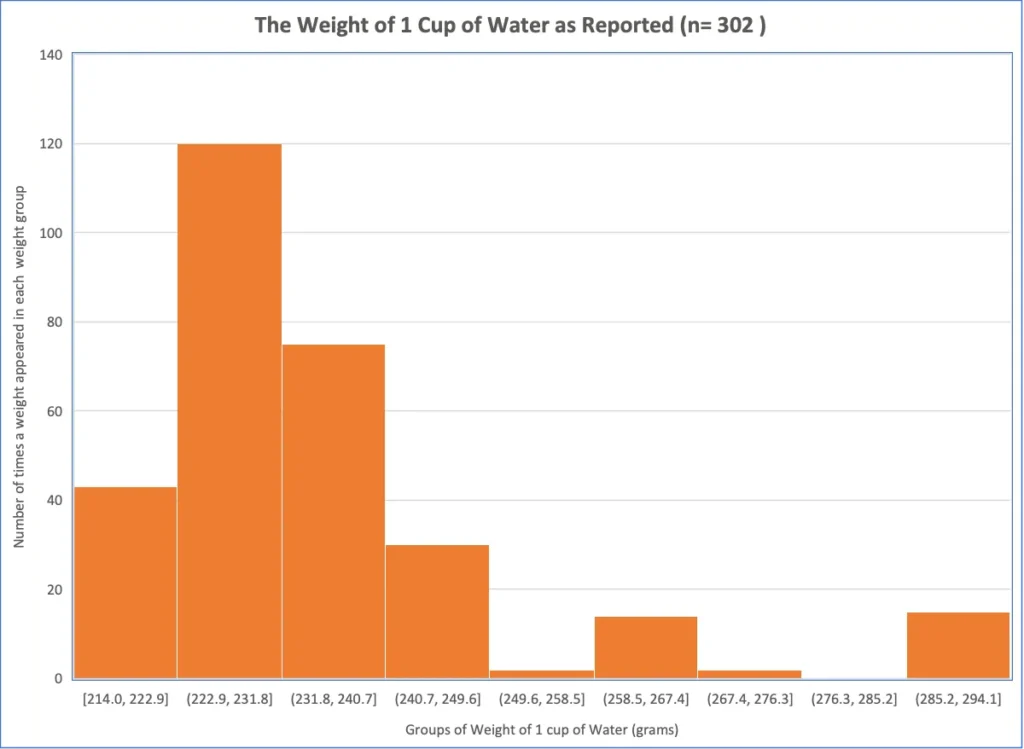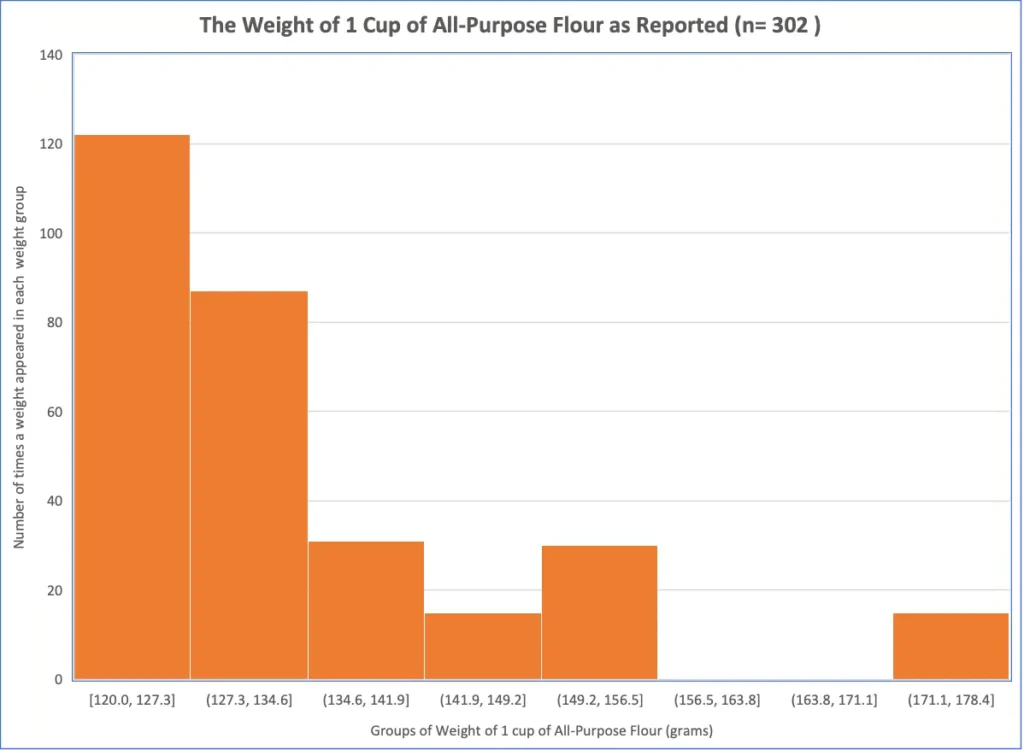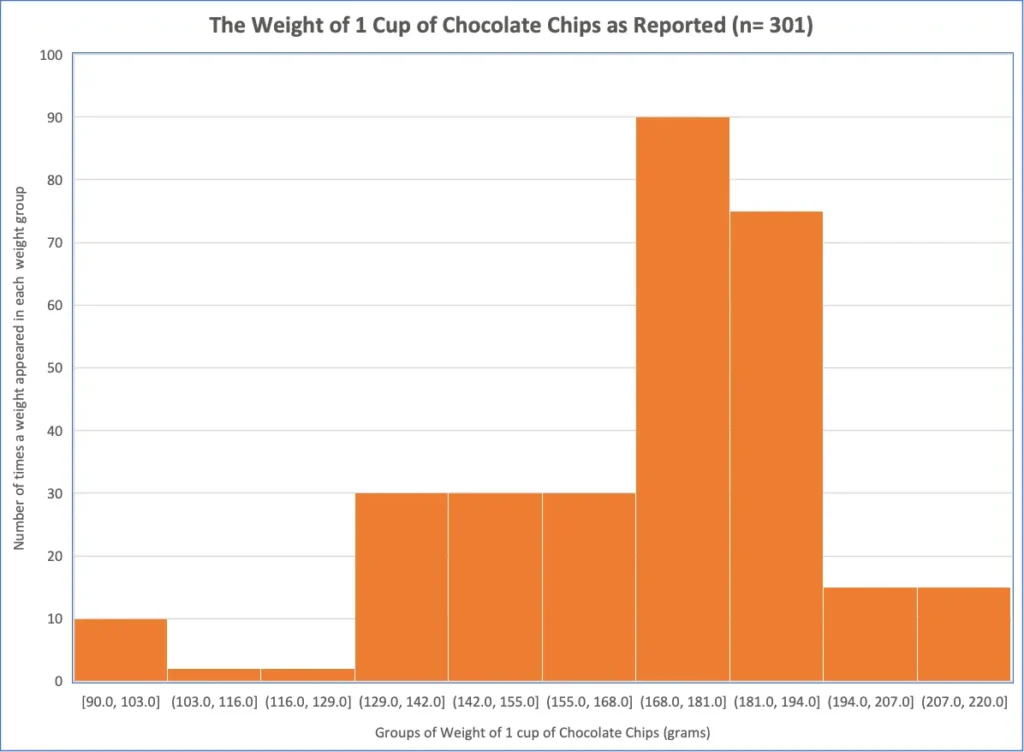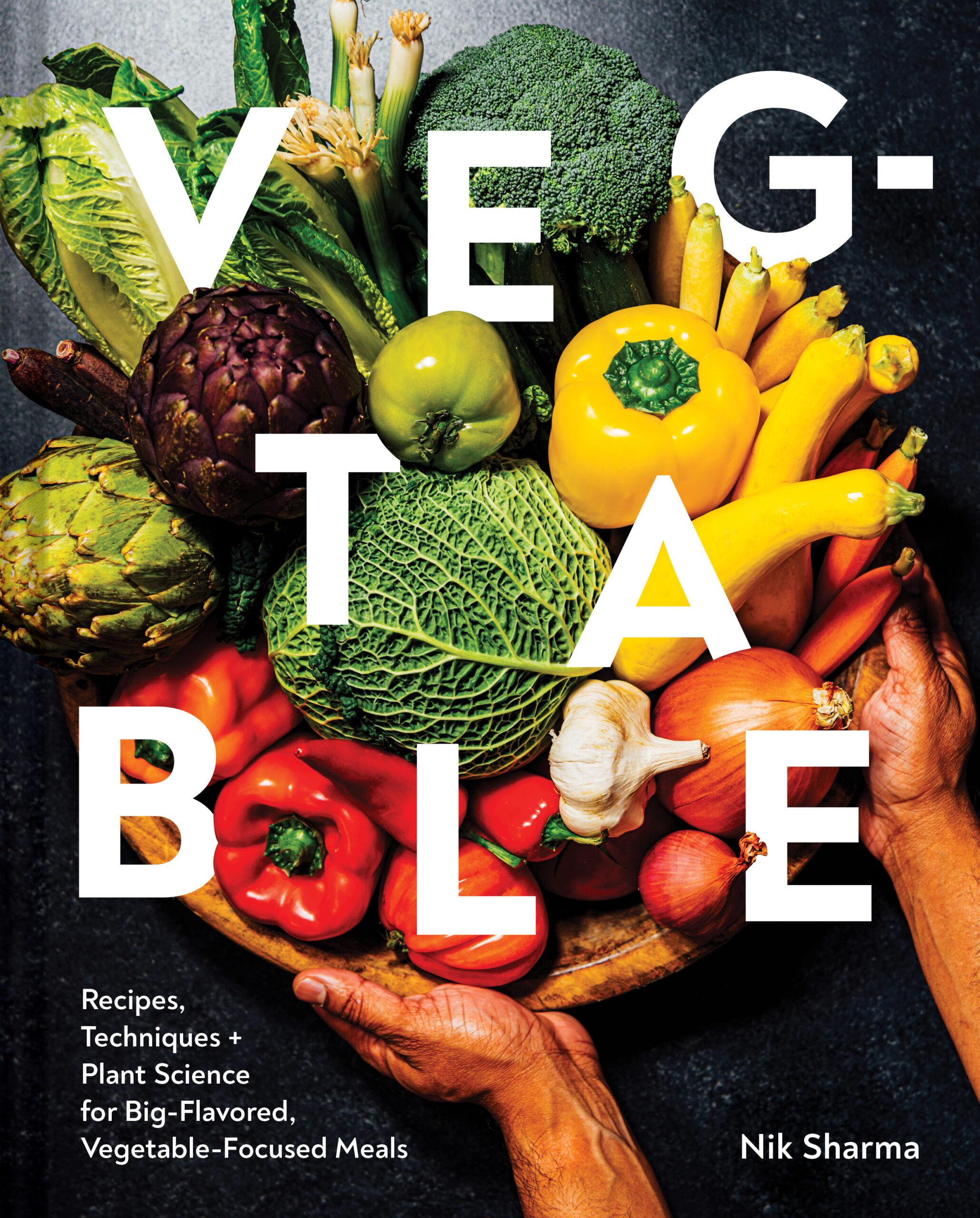
A Kitchen Experiment in Measurement
Last week, I asked readers to help me with a small experiment: weigh 1 cup each of water, all-purpose flour, and chocolate chips. I gave no extra instructions because I wanted to see how cup measurements translate across different kitchens (we had participants from several countries).
My goal was simple — to understand how much variation exists when people measure ingredients by volume instead of by weight.
What the Scales Said
Most participants reported weights in grams (which made me very happy — I’m pro-gram). About 10 percent used ounces, and one used fluid ounces for water. After converting everything to grams, I sorted the results into weight ranges to visualize how inconsistent a “cup” can be.
1 Cup of Water
Water should be the easiest baseline: 100 ml of water = 100 g.
Yet, reported results ranged from 214 g to 294 g, with most clustering near 240 g, the U.S. liquid cup standard. (A U.K. cup is 250 ml.)
When I measured water in my own kitchen, the readings varied depending on the tool:
- 1 cup OXO liquid measure → 220 g
- Dry measuring cups (three brands) → 212 g, 229 g, 220 g
Even a 20 ml difference (a little over 1 Tbsp) may seem trivial, but context matters. For soups or stews, that’s negligible; for cakes, breads, or custards, that variation can change texture.
Multiply that small error across multiple cups — say eight cups of broth — and you could end up 160 ml short, nearly a full serving gone.

1 Cup of All-Purpose Flour
Flour is one of the most debated ingredients in cooking. Look at the published standards:
| Source | Weight per Cup (g) |
|---|---|
| King Arthur Baking | 120 g |
| The New York Times | 128 g |
| Bon Appétit | 130 g |
| All Recipes | 136 g |
| Cook’s Illustrated | 140 g (what I use) |
In our experiment, reported weights ranged from 120 g to 178 g — nearly a 50 percent spread.

Why? It depends on:
- Cup size and manufacturer
- How the cup is filled (scooped, leveled, or packed)
- Whether the flour was sifted beforehand
Flour may look like powder, but it behaves like tiny elastic spheres with air pockets between them. Tapping or pressing compresses those pockets, packing in more flour and raising the weight.
👉 Bottom line: For baking, trust the weight listed in the recipe, not the cup measure. It’s faster, more consistent, and eliminates guesswork.
1 Cup of Chocolate Chips
I use 180 g per cup of chocolate chips in my recipes, and most participants reported similar numbers. Still, variations appeared depending on the chip shape and size — mini, regular, or large chunks — and how tightly they were packed.
Those visible air gaps explain why some cups weigh less. Press the chips down, and you can fit in dozens more.
Here’s where it gets interesting: if you use the same weight (180 g) but switch from small chips to large ones, the distribution of chocolate throughout the dough changes. The taste and texture of each bite shift — proof that even with equal weights, geometry affects flavor experience.

Weighing In: Why Weight Matters in Cooking
Most chefs agree that weighing ingredients is the most accurate way to cook. If a recipe lists both volume and weight, use the weights.
I keep two scales in my kitchen:
- Zwilling Enfinigy Scale (up to 22 lbs / 10 kg)
- Mini precision scale for smaller quantities (comes with a 100 g calibration weight)
Before weighing, always check that:
- The counter is level (use a spirit level or your phone’s Measure app).
- The scale is tared correctly before adding ingredients.
- You’re using the right type of measuring cup for liquids vs. dry goods.
When measuring liquids, note the meniscus — the curve of the surface.
- Water-based liquids: align the bottom of the curve with the mark.
- Oils: align the top of the curve with the mark.
Beyond Liquids and Flour
Produce varies widely, too. An onion can weigh anywhere from 60 g to 400 g depending on size and region. Listing ingredient weights removes ambiguity and ensures every cook gets the same result — anywhere in the world.
At the end of the day, our shared goal is simple: get the recipe right.
Weights make that possible.

